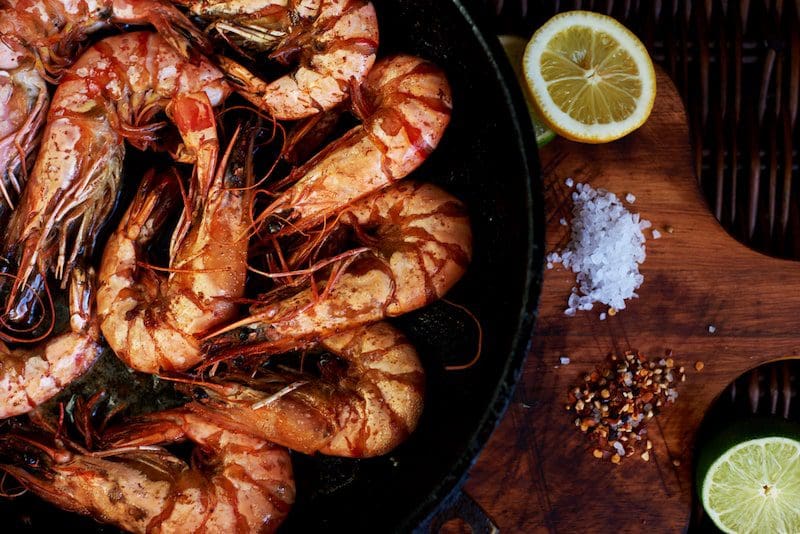The restaurant business is a brutal one. You have to delight the senses of your guests, offer a great environment, impress guests with your service, and then you need to do it again and again, and again. A great way to keep people coming back, however, isn’t with décor. It isn’t even with great service. It’s with your food. If you can offer it all, then you be a fine-dining restaurant that’s booked out days, if not weeks, in advance. If you can only offer one top-notch element, make it your menu.
You can do so much with flavor, but to do that, you need to add some oomph to it. It’s better to be big on your flavors than subtle, especially if you’re in an area that sees few repeat customers. If your primary customer base are tourists, for example, then you want to make an impression.
Switch to a Seasonal Menu
Owning and operating your own restaurant, rather than a chain store, can be hugely liberating. You are in full control over the menu and can change it if and when you feel the need to. With chain stores, you must offer the same products every time, otherwise the consistency promise is gone.
What this means for independent restaurants is that you can put taste and flavor first. Whereas a chain brand will have to use ingredients regardless of whether they’re in season or not, independent brands can adapt their menu to reflect what’s in season and what they can get fresh.
There are multiple benefits to doing this. One, it adds impressive value and flavor to your menu. People have become so used to eating fruits, vegetables, and even meats that have traveled thousands of miles to their grocery stores that they forget how good things can taste when their fresh and local.
Two, a great revolving seasonal menu brings people back, especially if you’re consistent about what you offer per season. If someone loves a rustic, hearty dish you create in autumn, then they should be able to look forward to that dish again the following year. It makes each meal that much more special while also packing each dish full of flavor – and vitamins.

Create Your Own Spice Mixes
Spice is the spice of life, especially in restaurants. Spices, herbs, and dried root vegetables like garlic or onion go so far in terms of food, especially if it’s marinated. To give customers a consistent experience, however, you need to mix your own spices.
For best results, always start with the best quality products. When you buy garlic powder, for example, don’t go for the cheapest option. Instead, opt for bulk organic garlic. The same goes for any other spice or flavor addition, from salt to cumin and beyond.
By buying these quality ingredients in bulk, you can then pre-mix the spices by mixing in parts. You will then want to get a sealing system so you can store and remove the air from those pre-mixed spice batches. Make sure everything is labeled, especially since you will want to use different spice mixes for different dishes.
Always Offer Special Dishes
Another great way to bring in customers as often as possible (even in touristy-heavy areas) is to offer an exceptional special menu. This can be a rotating menu you use once per week, or it can be something truly unique per day or per month.
Don’t Dictate How People Eat
While guiding guests through a culinary journey can work in very few, very specific instances, it isn’t a good rule of thumb to follow. The only time that works is when guests actively know that’s the kind of experience that they want to have and are willing to listen to someone else tell them how to eat to get the most flavor.
For most businesses, the answer should either be very, very obvious, or it should be left up to the customer. People who are willing to try out different approaches to their dishes will do so on their own. People who will not be doing that will only get angry if you try to tell them what to do. Let people explore their dish on their own. What you can do to help them is to make the meal user-friendly. They shouldn’t need to do three steps before taking a bite to get the full experience.
Don’t Overdo it With Salt
Salt is cheap. It’s easy. It’s also overpowering. If you oversalt foods, it’s immediately inedible, and it’s also not very inspiring. Marinating your foods, using fermenting, unique ingredients, fresh ingredients, and so on, is going to make a far larger impact on your guests’ tastebuds. In fact, use salt as minimally but impactfully as possible. If customers feel they need to add more, then they can do so to their own taste with the salt and pepper shakers on the table.
Not only will this force you to be more impactful with other ingredients, but it’s also an easy way to market your food as healthier.
Slow Cook Statement Pieces
The best flavors often come from marinating and slow cooking. Since these items take a lot of prep, try to stick with a few statement pieces. You can outline these pieces on your menu by literally outlining them or putting them in a Chef’s Recommended section in the menu. You can also offer them as part of a special for the night.
Either way, when it comes to flavor, preparation is essential. Meats, vegetables, fruits (and so much more) taste better when they have time to soak in flavors, but people simultaneously don’t want reheated leftovers. Marinating and slow cooking is, therefore, the answer.


